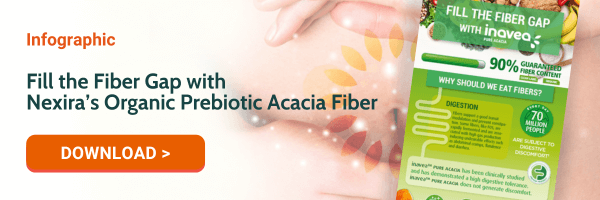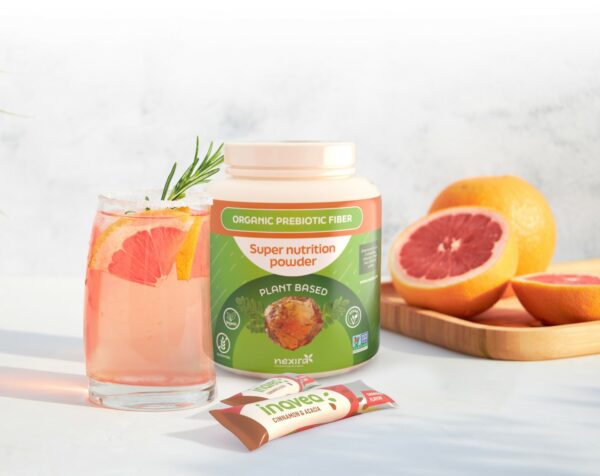Addressing health needs through acacia fiber fortification
The importance of dietary fiber in promoting overall health and wellbeing has gained substantial recognition recently. With consumers becoming more health-conscious, manufacturers are prioritizing the fortification of their products with fibers to meet the growing demand for nutritious and functional foods.
Nonetheless, manufacturers often face the challenge of sourcing fibers that can be easy to incorporate into both food and beverage products. Certain fibers, for instance, are sensitive to heat and low pH conditions, making undesirable for use in certain beverages. Furthermore, different fibers also interact in different ways with the human body, and lots of fibers are associated with side effects.
Selecting an appropriate fiber source can indeed be a challenge; however, acacia fiber stands out as a natural solution that not only offers health advantages but also streamlines formulation processes in specific applications.
Julie Impérato, Marketing & Communication Manager at Nexira, explores the significance of fortifying food and beverage products with dietary fibers, and shares the health advantages that acacia fiber offers to consumers.
Why are food and beverage manufacturers looking to fortify their products with additional fibers?
According to the Dietary Guidelines for Americans, the adequate intake for fiber is 25 g per day for women and 30 g per day for men (USDA, 2020). However, more than 90 percent of American women and 97 percent of American men do not meet recommended intakes for dietary fiber. In most European countries fiber intake is below the recommended levels, with average intakes as low as 12.7 and 13.6g per day in Spain and UK, respectively.
This is the Fiber Gap. Download our infographic to learn more:
As it is difficult to adopt a healthy diet, consumers are looking for finished products to fulfill their nutritional needs and to answer their quest for health benefits. Innovative high-fiber fortified products in convenient formats such as bars, shots or fiber powder, or supplements for Gut comfort or Immunity are several good solutions offered by brands and manufacturers.
Why is fiber such an important health area for consumers at the moment?
According to FMCG Guru, 68% of consumers recognize the link between good digestive health and good overall health. Consumers are aware of the multiple health benefits of a well-balanced microbiota, and digestive health is often associated with immunity because of its link with the gut barrier; consuming prebiotics can be considered a means of protection.
What are the biggest challenges with fiber fortification? How is Nexira providing solutions to these obstacles?
Food manufacturers are facing two major challenges with fiber fortification.
The first one is an industrial and development issue: some of well-known fibers are not resistant to heat treatment and low pH. This means that for some finished products, such as pasteurized beverages or dairy foods, the fiber will disappear in the formulation. It is a high deception point for the consumer. Our Acacia fiber is resistant to heat treatment and low pH, meaning that the manufacturer can guarantee a fiber level during the product shelf-life.
The second issue is consumer oriented: lots of fibers are associated with side effects of fibers: bloating or digestive discomfort after consuming fibers. Our acacia and baobab & acacia fibers are both FODMAP-friendly certified, meaning that they do not generated discomfort and can be used even by sensitive consumers like IBS-people.
What is currently trending in the fibre fortification sector at the moment?
Consumers worldwide are increasingly seeking natural products, with a shorter and cleaner ingredient list [no synthetics, no additives, GMO-free]. As they adopt a healthier diet, they reach for organically-produced foods that are free from certain components, including things such as sugar, hydrogenated fat, salt, gluten, and lactose. From another crucial perspective, they wish to consume foods that contain ingredients such as prebiotics, including natural fibers that can be beneficial to their gut health.
Our Acacia and baobab fibers have a low environmental impact: they are organic, sustainably sourced. In addition, they offer a clean label opportunity with a labeling as “Acacia and Baobab fibers”.
How is Nexira innovating in this area?
Nexira offers two main ingredients addressing the fiber gap: acacia [inavea pure acacia] and the recently launched combination of baobab & acacia [inavea baobab acacia]. We have selected ingredients answering consumers and manufacturers’ needs:
- high performance shown in our proprietary studies. In addition of being dietary fibers, our acacia fiber and baobab & acacia have demonstrated a prebiotic effect; a full spectrum fermentation, ie an action in the proximal and in the distal colon; the balanced microflora with the stimulation of beneficial bacteria. Each ingredient has a different impact, on different bacteria and different results on SCFA and postbiotics, which is matching the trend and need of sophistication. To go further, we have also demonstrated a protection of the microbiota through antioxidant activity and a modulation of inflammatory markers.
- high digestive comfort. Many fibers are associated with a negative perception because linked to bad experience: bloating or digestive discomfort after consuming fibers. Our ingredients are both FODMAP-friendly certified, meaning that they do not generated discomfort and can be used even by sensitive consumers like IBS-people.
- easy-to-use in a large array of applications from supplements to on-the-go functional foods and beverages, with a clean labeling. We have examples of formulations for nutritional powders, bars or dairy products.
- storytelling and exotism thanks to the African origin and the notoriety of baobab, to satisfy the trend of the ‘adventurous consumer’
- low environmental impact: organic, sustainably sourced.
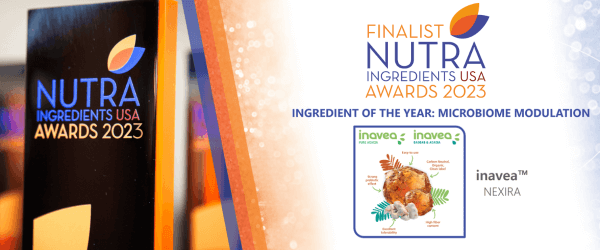
What ingredients and technologies are you using to fortify products with fibers?
As it is difficult to meet the fiber recommendations via traditional foods, innovative high-fiber fortified products may help consumers to increase their fiber intakes.
Fiber comes with a health halo and is easy for consumers to understand. The health benefits of dietary fibers are linked with health benefits like digestive comfort, intestinal transit, feeling of satiety & weight control, and improvement of the intestinal flora, prebiotic, well-being from inside, blood sugar regulation, etc. Nexira has demonstrated in proprietary studies the health benefits of its acacia fiber.
Prebiotic effect of acacia fiber has been largely demonstrated for 40 years in more than 40 studies. inavea™ pure acacia has a strong prebiotic effect at a dose of 10 g/day, stimulating healthy bacteria (Bifidobacterium longum, Prevotellaceae, Lachnospiraceae and F. Prausnitzii) and contributing to the Short Chain Fatty Acids production (butyrate).
Our study using the SHIME model has demonstrated an increase of microbiota diversity (healthy marker) thanks to our prebiotic acacia intake.
Our new proprietary clinical study has confirmed that inavea™ pure acacia consumption has beneficial physiological effects on human health by attenuation of post-prandial blood glucose levels.
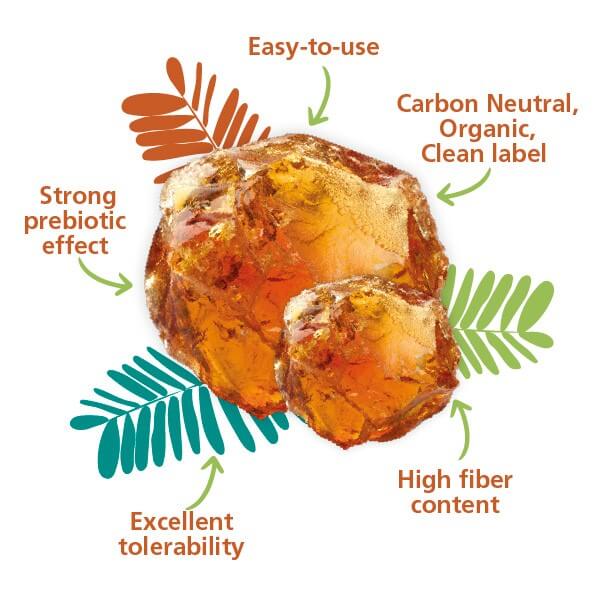
The properties of inavea™ pure acacia can help improve intestinal well-being and overall gut health.
From a technical point of view, our fiber is easy-to-use: this 100% soluble fiber offers an excellent dispersibility and is non-hygroscopic. Beyond its prebiotics benefits, inavea™ is a versatile ingredient, odorless, colorless and tasteless, easy-to-use in a large array of applications. Download our free white paper:
What are the most popular applications when looking to fortify products with fibre?
The proportion of people suffering from digestive health problems across the globe continues to rise. The prevalence of digestive health problems can be attributed to several factors such as aging population and poor dietary and lifestyle habits. People are looking for solutions through food supplements and through their daily food & beverage diet:
- Supplements’ consumers are more educated, used to probiotics for several years and they are looking for more sophistication like products targeting specific strains.
- Daily regimen consumers look at gut health as a regular component of their daily diet. These consumers are looking for easy-to-take products in their daily lifestyle, convenient and easy-to-go. Thus, market segments offering prebiotics are mainly bars, powders and dairy products like drinkable yogurts. According to a 2022 study of FMCG Gurus, “the gut microbiome” remains a specialist term very much, with less than two in ten consumers saying that they have heard of it.
According to Innova database, Dairy and Soft drinks are the most dynamic categories between 2020 and 2022 with thousands of NPL positioned on Digestive health/Prebiotic. Finished products are using claims understandable by the consumer, such as “Gut balancing”, “multi-fibres” or “Healthy gut prebiotics”.
What’s next for fibre fortification manufacturers?
It clearly demonstrated that prebiotic fibers have a strong impact on gut microbiome and thus on general well-being. The more diverse the gut microbiome is, the healthier it is. We believe that it could be the next opportunity to fiber fortification: to help consumers having a diverse diet to stimulate different bacteria and to improve their gut microbiome diversity.
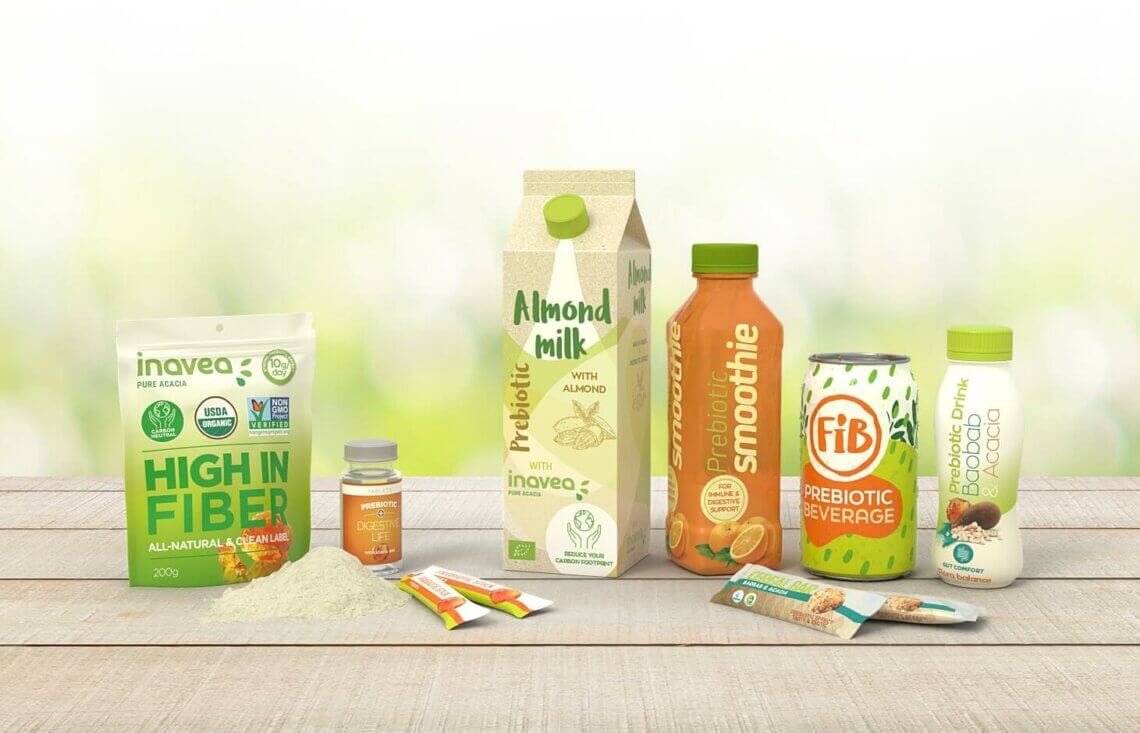
Ready to formulate?
Get your samples!
Banner credit: SOS SAHEL
This communication is not intended to the final consumer. It provides scientific information for professionals only. Communications to the final consumer have to be checked according to local regulations in force, since the conditions of use are beyond our control. This statement has not been evaluated by the FDA. This product is not intended to diagnose, treat, cure, or prevent any disease.

